Composition and use of potassium sulfate fertilizer

For the harvest to be rich and stable, experienced gardeners use special feeding. They saturate plants with useful microelements, activating the processes of development and fruiting. Both organic and mineral compounds are used as fertilizers.
What it is?
Potassium sulfate is actively used in agriculture. It is a mineral groundbait that has many positive effects.
The following processes are accelerated:
- photosynthesis;
- sugar formation;
- intracellular metabolism.
Also, this fertilizer is used to protect plants from fungus, mold and increase the frost resistance of crops. There is no chlorine in the top dressing, therefore it is recommended to apply it under different plants.
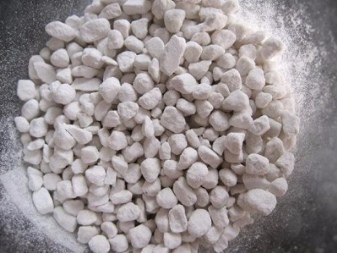
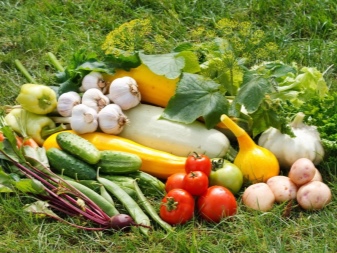
Like many other compounds, potassium sulfate has found its use in fertilizing garden and garden flora representatives. The main feature of the product is its rich potassium content. Its volume reaches 54%. This element has a positive effect on the ripening of fruits, as well as on the development of strong immunity. Regular application of the composition helps plants to tolerate moisture and attacks from pests.
The product is very popular in the form of light diamond-shaped crystals. They can have white or gray light. The agro-product dissolves quickly in water, due to which it is easily absorbed into the ground and penetrates into the root system.
Chemical composition of mineral bait (according to GOST standards):
- potassium - its share varies from 46 to 54%;
- sulfur - up to 18%;
- magnesium - maximum content 3%;
- calcium - 0.4%.
Physical characteristics of the drug:
- the fertilizer has a bitter taste with sour and salty notes;
- the powder dissolves quickly in water.
Chemical formula - K2SO4.


Benefit and harm
Each composition has positive and negative qualities that must be taken into account before use. Today, sulfate fertilizers are actively used in the agricultural sphere, due to which their properties have long been studied and tested in practice.
The positive effect of the drug:
- the processes of emergence and development of young shoots are activated;
- the concentration of vitamins in plant stems (sugar, nitrogen substances and other components) is increasing;
- the risk of contracting various diseases is reduced;
- yield increases significantly;
- useful substances and trace elements are evenly distributed throughout the plant due to the active circulation of juices;
- top dressing can be used for plants that do not tolerate chlorine (horseradish, grapes, potatoes, cabbage and other representatives of the flora).
It is also an affordable product that can be found at any agricultural store. As disadvantages, it is necessary to note the effect that will be rendered on the plant as a result of a shortage or excess of potassium. If the plant needs potassium, carbon metabolism is noticeably disturbed. As a result, the sugar level in the stems decreases and the process of starch formation slows down. All this negatively affects the yield, as well as the taste and benefits of the fruit.
Experienced agronomists apply top dressing regularly to maintain comfortable conditions for the growth and fruiting of plants.
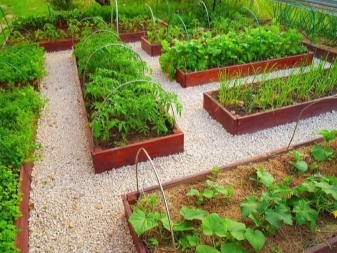
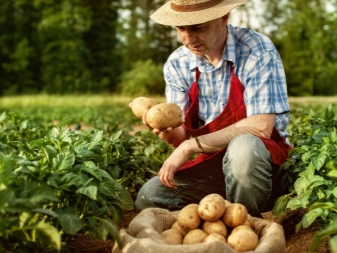
If photosynthesis begins to decline, this negatively affects the immune system.Garden and horticultural crops begin to lose their resistance to diseases and attacks from harmful insects. Signs of impaired photosynthesis are actively manifested in potatoes, corn and buckwheat.
The flaw in this component can be detected by the following changes:
- the green mass at the bottom of the plant loses color;
- the edges of the foliage turn yellow and dry;
- stimulation of stepchildren;
- chlorotic spots appear;
- shoots lose their elasticity;
- fragility of the stems increases;
- growth slows down significantly;
- yield falls;
- the palatability of the fruit is markedly reduced.
Also, negative consequences are provoked by an excess of potassium, therefore, the use of mineral fertilizer must be correctly and accurately observed in optimal proportions.
Excessive amounts of potassium are fraught with the following consequences:
- young leaves become weak and thin, streaks of chlorosis appear on them;
- the root system is destroyed;
- the plant poorly absorbs and assimilates useful microelements.
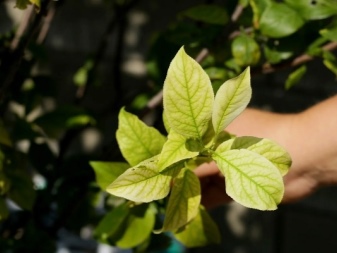
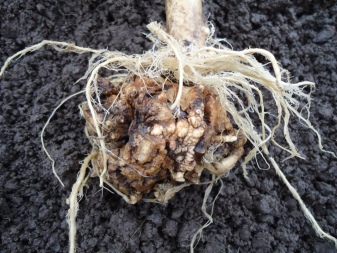
When do you need to deposit?
It is necessary to use mineral dressing as soon as signs of a deficiency of this component have been noticed. Experienced agronomists, who have been using various types of fertilizers for a long time, apply them at certain times. Before using the composition, many factors must be taken into account:
- for what purpose is the composition used (to protect the plant before wintering, to strengthen its immunity, to increase productivity or to achieve another result);
- individual tolerance of the drug and the condition of the plants;
- season;
- soil type.
The latter factor is essential and influences what effect the bait will have. The type of soil also affects the time of incorporation of the chemical composition. Experts recommend applying potassium sulfate on loose peat soils. So the drug will be as effective and safe as possible.
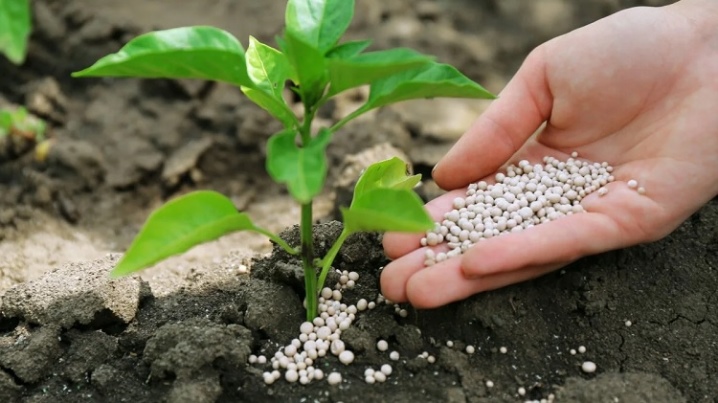
On loamy soils, it is also used, but rarely, due to the high concentration of clay. This component prevents beneficial trace elements from penetrating into the ground and reaching the root system of the plant. Features of the use of mineral dressing and the need to add it for different types of soils.
- Launching the growth and development of the main plant systems, increasing fruiting. To achieve such results, fertilizer is used on peat, sandy, floodplain and red earth soils.
- To help young sprouts, top dressing of this type is added to loamy soil or fertile black soil. It is advisable to moisten the soil before applying. In this case, it is especially important to adhere to the timing and schedule of regular fertilization.
- To increase the acidity level, potassium sulfate is mixed into the lime soil.
As practice shows, most often this type of mineral fertilizer is used for peat soils and podzolic soil plots that need a portion of nutrients. Agronomists practically do not use sulfate on salt licks. This is due to the fact that the earth is saturated with various types of salts. When using fertilizer for black soil, the incorporation should be carried out only in relation to individual crops.
A product is introduced to nourish plants that need significant input of microelements. These are crops such as beets and sunflowers. They also include fruit trees.
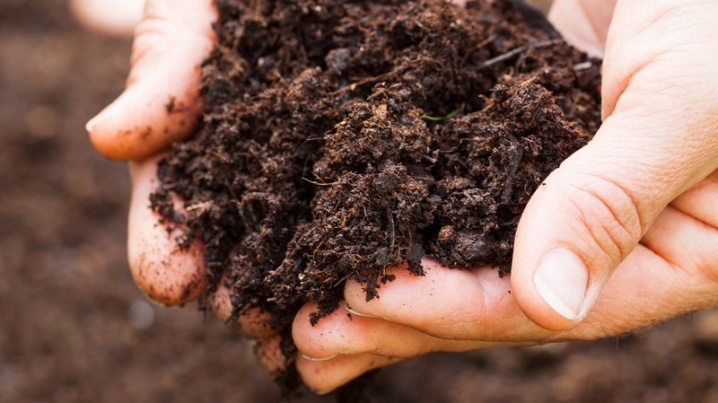
Application
Timing
Professional agronomists always adhere to deadlines when applying various types of fertilizers. The good thing about potassium sulfate is that it can be used in any season without limiting yourself to a specific time of year. When processing heavy soil, it is recommended to fertilize in the fall. In order for the preparation to reach the root system of the plant faster, it is necessary to make small indentations near the trunk.
For a light and loose substrate, the subcortex is performed in the spring. It is recommended to do this in the process of digging a plot in the garden or in the vegetable garden. With the onset of the growing season, the mineral composition is added a second time.This enhances the growth of crops, and also has a positive effect on the quality of root crops. In the summer, the composition is added as needed. For example, if signs of potassium deficiency were noticed or it is necessary to protect the plant from pests and other negative effects.
Fertilizer of this type is actively used for feeding flowers. The composition is applied during the opening of the buds or at the beginning of flowering. For fruit trees and shrubs, potassium sulfate is added during fruiting. This will improve the quality of the harvest, enhancing the gastronomic quality of the fruit.
Note: dressing with mineral composition in the fall helps the plants prepare for frost and increases their vitality.

Application options
There are many methods of fertilization, when choosing which specialists take into account the season, the form of the preparation, the condition of the plants and other factors. When using potassium sulfate, agronomists choose between horse and foliar methods.
The dry mineral composition is mixed with water or used in its original form. In the first case, it is injected next to the trunk of the plant, immediately under the root. In the second, the culture is sprayed with a mineral solution. To achieve maximum efficiency, pre-plowed soil is sprayed. The procedure is performed at the beginning of winter or before transplanting. To prepare a liquid composition, it must be diluted with clean water in accordance with the instructions in the instructions. Then it is brought under the root. Many experienced agronomists and gardeners believe that this option is the most practical and effective.
Spraying with a mineral solution saturates both green mass and fruits with useful microelements. The calculation of the solution in this case is as follows: 40 grams of dry product per 10 liters of water. The resulting mixture is sprayed from a nozzle.

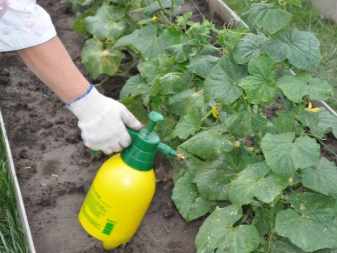
How to use for different crops?
Sodium sulfate is considered one of the most common fertilizers. It is actively used both for processing large agricultural land and for small vegetable gardens or orchards. When buying a drug in a store, you receive a short instructions for use with the powder, but it is recommended to study the ways of using the product for different cultures in more detail.
Competent use of potassium sulfate when fertilizing the following fruit crops.
- Tomatoes. The optimal consumption is 20 grams of the composition per one square meter of the land plot. This will help you grow a lot of juicy and tasty tomatoes. It is recommended to introduce the first portion of fertilizers a couple of weeks after planting the seedlings. The next time, the mineral composition should be added only if a blue tint appears at the bottom of the stem.
- Cucumbers. When processing an area where cucumbers grow, the composition must be applied 3 times in one season. For the first time, potassium sulfate is added before sowing. The next bait procedure is in the process of planting fruit crops. The last fertilizer is added as soon as flowering begins. The optimal consumption is 100, 200 and 400 grams for each stage.
- Root crops (carrots, beets and other crops). In this case, use a dry preparation. One square meter of the site is allocated 30 grams of powder. It is recommended to add it in the fall or spring, while digging.
- Cabbage and various greens. In this case, you need to use the method described above.
- Fruit shrubs. Before the plant begins to bloom, it needs to be fed. To do this, use 20 grams of product per square meter of land.
- Grape. For grapes of various varieties, this feeding option is also suitable. To 20 grams of sulfate, add 40 grams of superphosphate (proportions per square meter). Chemical components must be diluted in 10 liters of water. Top dressing is best done after harvesting or with the arrival of spring.
- Trees. To get a bountiful harvest of fruit, it is necessary to apply 220 grams of fertilizer to each planting hole.
- Strawberry. Potassium sulfate is best added during berry ovary. This usually happens in May. For one bush, 20 grams of composition is enough.
- Potato. Dry powder is added to the wells at the rate of 7 grams per well.
- Garden flowers. 18 grams per square meter of plot will be enough to get lush and vibrant buds. The best time to apply is in the spring, while working the land with tools.
Note: Separate fertilization rules have been developed for roses. They need to be fertilized 2 times per season. The first time, 75 grams must be added to each well when planting the plant. The second time feeding is applied at the beginning of July. In this case, the flower is watered with a composition, for the preparation of which you need to dilute 25 grams of sulfate in 10 liters of pure water.
Also, the drug is actively used for wheat and other cereals.
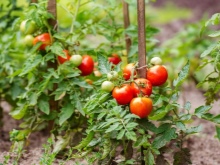
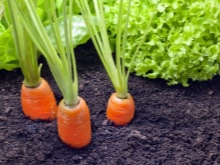
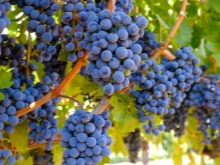
How is it combined with other fertilizers?
Common fertilizer can be combined with other fertilizers. By combining different formulations, a special effect can be achieved. When using potassium sulfate, you must adhere to the following rules:
- this type of feeding should not be applied together with honey or urea;
- if it is necessary to prepare a composition with potassium and nitrogen fertilizer, the components should be mixed in advance;
- when using top dressing for the treatment of acidic soils, it is recommended to mix potassium with lime;
- maximum efficiency can be achieved by combining the drug with phosphorus.
Precautionary measures
When using mineral supplements, certain precautions should be taken. Be sure to use work clothing and other protective equipment. You need to work with fertilizer with gloves. A respirator is used to protect the respiratory tract. The sulfate must not come into contact with the skin or cornea of the eye. At the end of the processing of the land and plants, you must thoroughly wash your hands and face with soap. The fertilizer should be stored in a room with low humidity, out of the reach of children. Also, the room should be free of dust accumulations.
It is advisable to use the dry component diluted in water immediately. It is not intended for long-term storage.


For information on why potassium sulfate is needed and how to use it correctly, see the next video.













The comment was sent successfully.